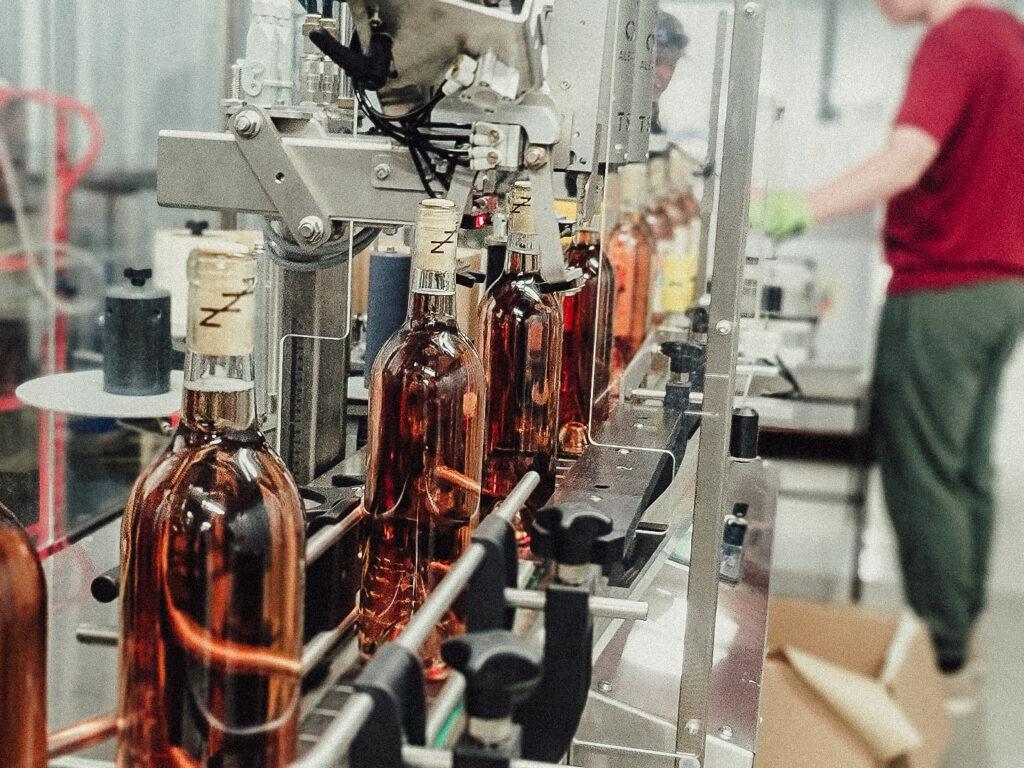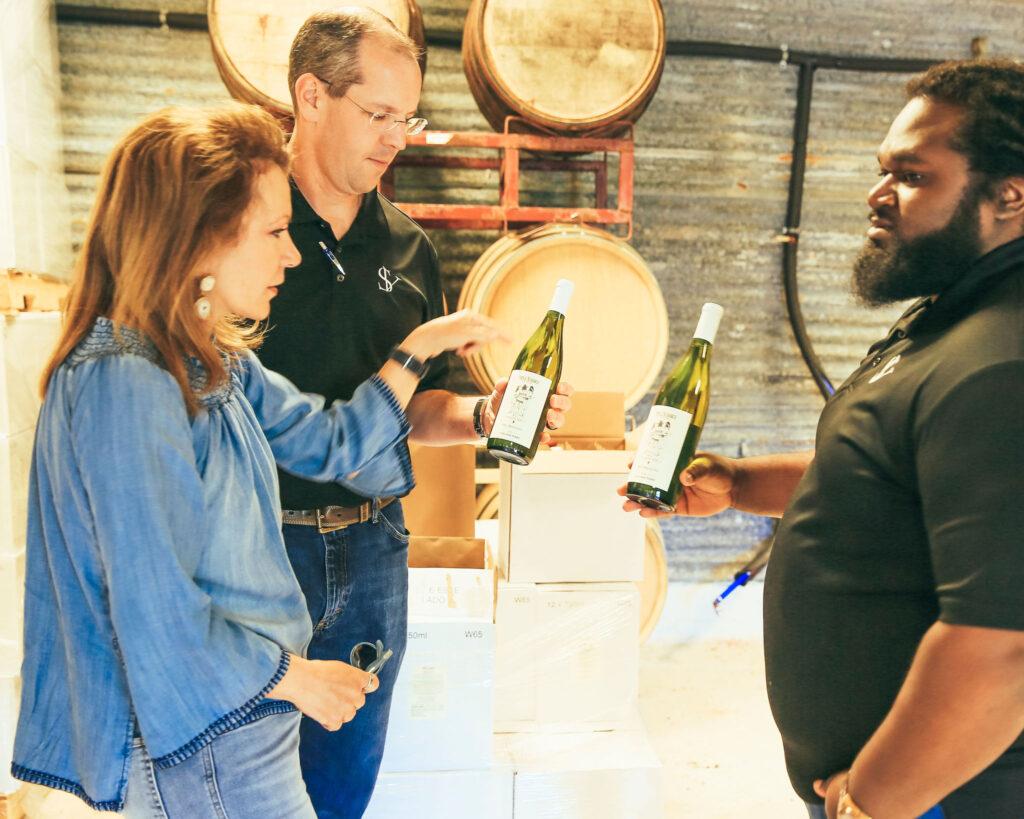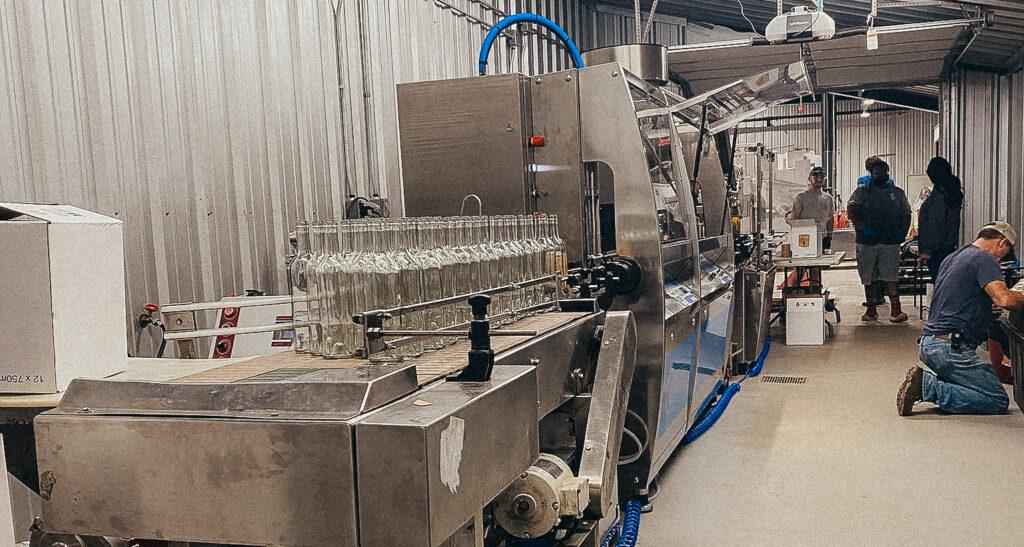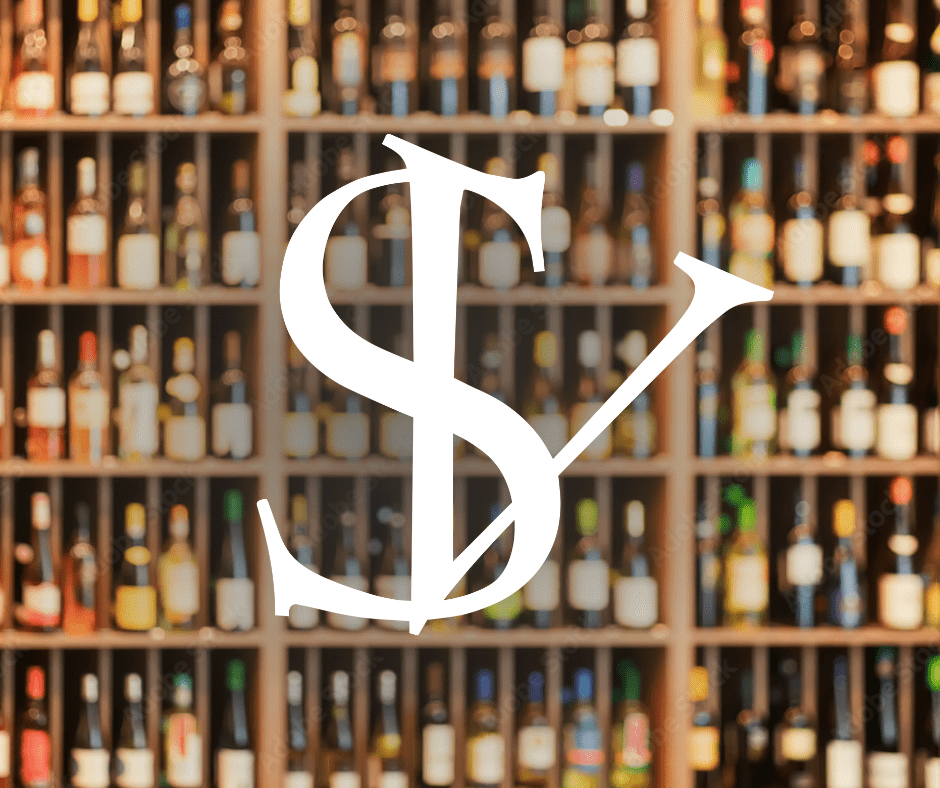There is a lot to experience and soak in when admiring a shelf full of wine labels with a variety of designs, textures, colors and materials. Some labels might be overwhelming to the eye, while others draw you in and make you crave a taste of the wine. From the glass of the bottle to the fonts on the label, each detail is an important reflection of what can be found inside. A wine label is both a representation of your wine, brand, and you. Your design color scheme and layout all lean into this concept of marketing your wine and brand.
Given this significance, we take things seriously when it comes to evaluating wine with our clients to ensure what’s on the outside matches the personality of the wine inside. Label creation coincides with the bottling process as we invite our clients to taste their wines on site at Sage’s Vintage. This allows them to explore the complex layers of the wine, consider tasting notes and overall style, and think about what imagery will best reflect their finished product.

Tasting and brainstorming the ‘image’ of the wine is the fun part, but there’s another key component that must be considered to meet government labeling standards. Technical details, like the alcohol content (ABV), must be incorporated into the final label in order to receive approval and go to print. Find an outline of these requirements below.
TTB Label Rules:
Wine sold in interstate commerce must comply with labeling requirements in 27 CFR part 4 and 27 CFR part 16. Here is the commonly required information:
Information that must appear on the BRAND label:
- Brand name 27 CFR 4.33 – Must match brand name entered on this application.
- Class & Type 27 CFR 4.34 & 27 CFR 4.21 – Must be consistent across labels and with any labeling guidance received during formula approval.
- Percentage of Foreign Wine 27 CFR 4.32 (a)(4) – Required only if reference is made to the presence of foreign wine for American/foreign blends.
- Appellation of Origin 27 CFR 4.25
- Required only if label(s) contain a grape varietal, vintage date, or semi-generic designation, or wine is estate bottled.
- Must be consistent across labels and match appellation(s) entered on this application.
Information that must appear on ANY label:
- Alcohol content 27 CFR 4.36
- Net contents 27 CFR 4.37 – Approved metric standards of fill only.
- Name and address 27 CFR 4.35 – Must be a name (company or DBA/trade) from your TTB permit record.
- Declaration of sulfites 27 CFR 4.32(e) – Required if used at concentrations of 10 ppm or more.
- Declaration of colors 27 CFR 4.32(c)&(d) – Required if using cochineal extract, carmine, FD&C Yellow No. 5.
- Country of origin 19 CFR part 134 – Required for imports.
- Health warning statement 27 CFR part 16 – Must appear as a single statement using this exact wording: GOVERNMENT WARNING: (1) According to the Surgeon General, women should not drink alcoholic beverages during pregnancy because of the risk of birth defects. (2) Consumption of alcoholic beverages impairs your ability to drive a car or operate machinery, and may cause health problems.
More Information
Beverage Alcohol Manual (BAM): A Practical Guide to Basic Mandatory Labeling Information for Wine
Prohibited labeling practices 27 CFR 4.39
Allowable Revisions (Complete List)
There is no doubt that wine labels influence purchasing decisions for consumers. Ask some of the wine connoisseurs in your life what labels they’re drawn to and why. After all, there’s a great deal to unpack in every label.



